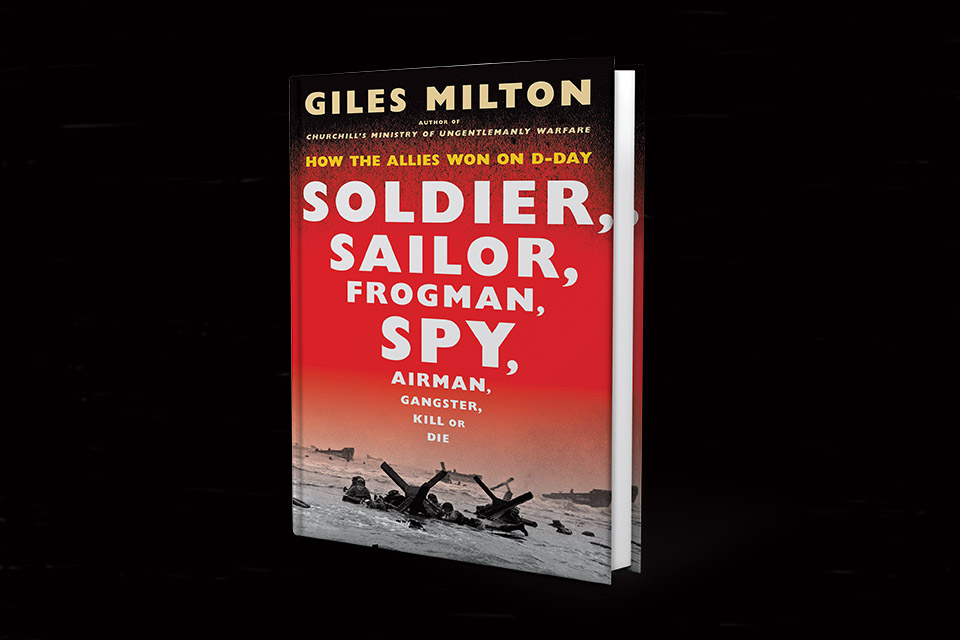Author Giles Milton focuses on Operation Overlord’s overlooked.
Soldier, Sailor, Frogman, Spy, Airman, Gangster, Kill Or Die: How the Allies Won on D-Day
Giles Milton, 486 pp.
Henry Holt, 2019; $30
With just the merest whiff of hyperbole, a peculiarly titled volume by British author Giles Milton promises a “unique new history” of the first day of the Allied landings, incorporating “little-known voices” in a “vast canvas of human bravado.” Bold claims, indeed.
Milton’s approach is conventional enough, framing his narrative of June 6, 1944, by focusing on the myriad individual stories on all sides connected to it. It is this wealth of material that brings freshness to a well-known story. Among the subjects are bewildered French housewives, resistance fighters attempting to deceive the Germans, American paratroopers fighting in the dawn of Sainte-Mère-Église, and—of course—the unfortunates battling their way across the bloodied beaches.
Many of the voices that Milton employs are unfamiliar, while others are well-known, like the local German commander Field Marshal Erwin Rommel—who spent the day agonizing over the landings from afar, as he had travelled to Germany for his wife’s birthday—or Royal Air Force meteorologist James Stagg, who, unlike Rommel’s weatherman, had provided an optimistic forecast for the operation. Woven together, they retell the momentous story of D-Day.
Milton—the author of Churchill’s Ministry of Ungentlemanly Warfare, among other bestselling history titles—is an adept storyteller, and his subjects are vividly reimagined from snippets of diaries and interviews. Such is his cinematic eye and his feel for the telling vignette that it is not difficult to feel subjects’ pain, to smell their fear, or to share in their victory. Some of the most harrowing accounts are those of the war’s often-unsung heroes, like the battlefield medics working by candlelight to save young men who have been hideously maimed and disfigured in combat. This is a history filled with human emotion.
While the book is engaging and well-written, it has shortcomings. Milton imaginatively recreates D-Day’s “on the ground” experience, but the operational overview is sometimes lost amid the tumult of events. This leaves the reader with a partial understanding of how they coalesce into a coherent whole. And Allied voices dominate. History, as they say, is written by the victors but it is disappointing to encounter only a handful of German-language archival sources.
So what of the grand claims made for Milton’s book? All history books today promise novelty, and this volume is to some extent a repackaging of an already-familiar subject. But beyond that gripe there is much to admire. Milton writes with fluency and immediacy, and contributes numerous previously unseen accounts to the historical record. For once, it seems, the hyperbole is justified. ✯
This story was originally published in the August 2019 issue of World War II magazine. Subscribe here.





